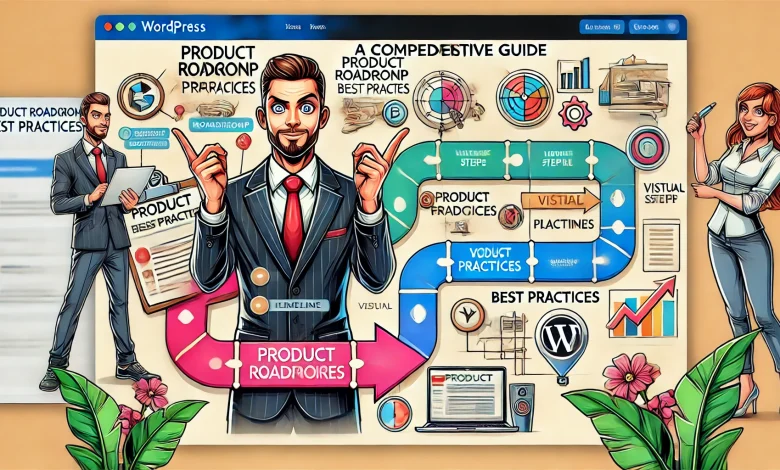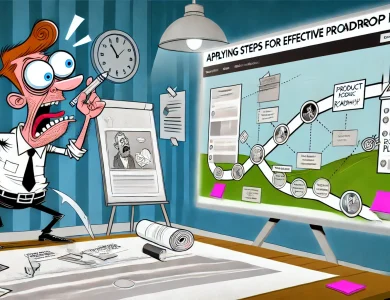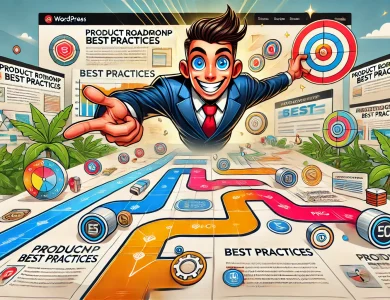Product Roadmap Best Practices: A Comprehensive Guide for Product Managers, CPOs, and CEOs

In today’s fast-evolving market landscape, a well-executed product roadmap is not just a tool to track product development, but a critical strategic asset that guides an organization toward its business goals. Whether you’re a product manager working on day-to-day decisions or a CPO or CEO setting long-term company vision, an effective roadmap can ensure alignment, facilitate collaboration, and drive business outcomes.
This guide will cover the foundational, intermediate, and advanced concepts of product roadmapping, including the integration of AI-driven tools and strategic decision-making, while addressing common challenges that product leaders face.
What is a Product Roadmap?
A product roadmap is a visual and strategic representation of the steps required to achieve your product’s vision over time. It aligns teams, communicates progress, and ensures that all stakeholders share the same priorities. Importantly, roadmaps help companies allocate resources effectively while maintaining focus on long-term goals.
For CEOs and CPOs, the roadmap offers a transparent view of how product strategy aligns with broader business objectives. For product managers, it provides clarity and ensures that tactical decisions are consistently moving toward the strategic vision.
Types of Product Roadmaps
Product roadmaps come in various forms, each serving different purposes:
- Strategic Roadmaps: These focus on the long-term goals of the company and provide a high-level overview of where the product is headed. Strategic roadmaps often span over years, providing a future outlook that aligns with the company’s vision.
- Release Roadmaps: These focus on specific deliverables or versions of the product, organizing feature releases, and updates by timeframe (e.g., quarterly or monthly).
- Feature Roadmaps: These are detailed plans that break down the specific features being developed, detailing priority, timelines, and dependencies for development and testing.
Each type of roadmap serves different stakeholders. For example, a strategic roadmap might appeal to the CEO and board, while a feature roadmap may be more relevant to engineering and product development teams.
The Role of a Product Roadmap in Product Management
The roadmap is the product manager’s blueprint, guiding day-to-day tasks while maintaining alignment with long-term strategic goals. It allows for resource allocation, helps prioritize features, and communicates timelines to both internal teams and external stakeholders. However, roadmaps are not rigid; they should evolve based on customer feedback, market shifts, and competitive dynamics.
For CPOs, the roadmap serves as a vision communication tool, ensuring that every team understands how the product fits into the company’s broader strategy. For CEOs, the roadmap aligns product development with revenue goals, market opportunities, and competitive positioning.
Core Components of an Effective Product Roadmap
To build a roadmap that resonates with different stakeholders, it should include:
- Timelines: Define short-term and long-term timelines, ensuring clear deliverable expectations.
- Goals and Objectives: Establish measurable business outcomes for each phase.
- Features: Clearly define each feature and its value proposition.
- Milestones: Mark significant achievements, such as feature launches or new market entries.
- KPIs: Track success metrics such as customer retention, satisfaction scores, or revenue growth.
Every component should be connected to the overall business strategy, ensuring alignment from tactical execution to strategic goals.
The Importance of a Flexible and Iterative Roadmap
In an unpredictable business environment, rigid roadmaps are risky. Changes in the market, customer needs, or technology can render a fixed roadmap obsolete. Flexibility allows for quick pivots, enabling companies to respond to market trends while keeping long-term objectives intact.
Steps to Building a Successful Product Roadmap
Here is a more detailed breakdown of building an effective product roadmap:
- Stakeholder Alignment: Collect insights from cross-functional teams, including design, marketing, and sales, ensuring everyone’s goals are aligned with the company’s strategy.
- Prioritization: Use a combination of customer feedback, business value, and development complexity to prioritize features.
- Set Measurable Outcomes: Define KPIs and OKRs that can measure the success of each phase.
- Iterate and Adapt: Regularly revisit the roadmap to adapt based on feedback, performance, and market dynamics.
- Visualize for Communication: Use clear visuals to represent timelines and dependencies, ensuring everyone can easily interpret and follow the roadmap.
Balancing Long-Term Vision with Short-Term Goals
Product managers often grapple with balancing immediate tactical needs against the long-term strategic vision. One solution is to segment the roadmap into short-term sprints or releases, while anchoring the roadmap in long-term milestones that reflect the product vision.
A practical approach is the dual-track roadmap, where short-term sprint goals run parallel to strategic, high-level milestones. This ensures that day-to-day work advances long-term priorities.
Using AI for Feature Prioritization
AI can analyze customer feedback, behavior, and product performance to rank features by potential impact. This eliminates human bias and enables product teams to focus on what will drive the most value. For example, AI can prioritize features that improve retention rates or increase user engagement based on historical data patterns.
Visualization Suggestion: A Feature Impact Matrix plotting feature requests against business value and customer satisfaction.
AI for Identifying Product Gaps and Opportunities
AI helps product managers spot gaps in their product offerings and identify new opportunities by analyzing market data and customer behavior. For example, AI can surface unmet customer needs or highlight areas where competitors have an edge, providing actionable insights for product expansion.
Advanced Concepts
AI for Dynamic Roadmap Adjustments
In real-time, AI can monitor market conditions, customer sentiment, and feature performance, adjusting the roadmap as necessary. This allows the roadmap to remain agile and reflective of real-time data, rather than static assumptions made at the start of a project.
Using Predictive Analytics to Inform the Product Roadmap
AI-driven predictive analytics allows product managers to forecast trends and anticipate what customers will want in the future. This data can shape product development, ensuring that features align with where the market is headed, not just where it currently stands.
AI for Optimizing Resource Allocation in Product Development
AI can optimize resource allocation by analyzing team performance, available resources, and project timelines, ensuring that the right people are working on the right projects at the right time. This reduces bottlenecks and maximizes productivity across the roadmap.
Visualization Suggestion: A Resource Allocation Dashboard showing team capacity vs. project demand.
Best Practices and Practical Examples
Best Practices for Product Roadmap Development
- Frequent Updates: Regularly update the roadmap based on new insights and changes in strategy.
- Cross-Functional Involvement: Engage all relevant departments in roadmap planning to ensure diverse perspectives.
- Keep it Visual: Use visual aids to simplify complex processes and ensure everyone understands the roadmap.
- Customer-Centric Focus: Always consider how features impact customer satisfaction and overall business value.
Case Study: How AI Transformed a Product Roadmap
A mid-sized SaaS company integrated AI into its roadmap planning, using AI to prioritize customer feedback and optimize resource allocation. The result was a 20% reduction in time-to-market for new features, and a 30% increase in customer satisfaction due to better alignment of features with customer needs.
Key Lessons:
- AI can reduce bias in feature prioritization.
- Dynamic resource allocation improves development efficiency.
- Predictive analytics allow for more accurate forecasting of customer needs.
Popular AI Tools for Product Roadmap Management
Popular AI tools include:
- Aha!: Excellent for high-level strategic roadmapping.
- Productboard: Useful for customer-driven feature prioritization.
- Jira: Best suited for agile teams managing sprints and feature releases.
Conclusion
By following these product roadmap best practices, product managers can ensure that their roadmaps are not just tools for tracking progress but strategic assets that drive business growth. Whether through AI-powered insights or frequent cross-functional collaboration, the roadmap should remain flexible, iterative, and customer-centric—ensuring alignment from the C-suite to the engineering floor.




